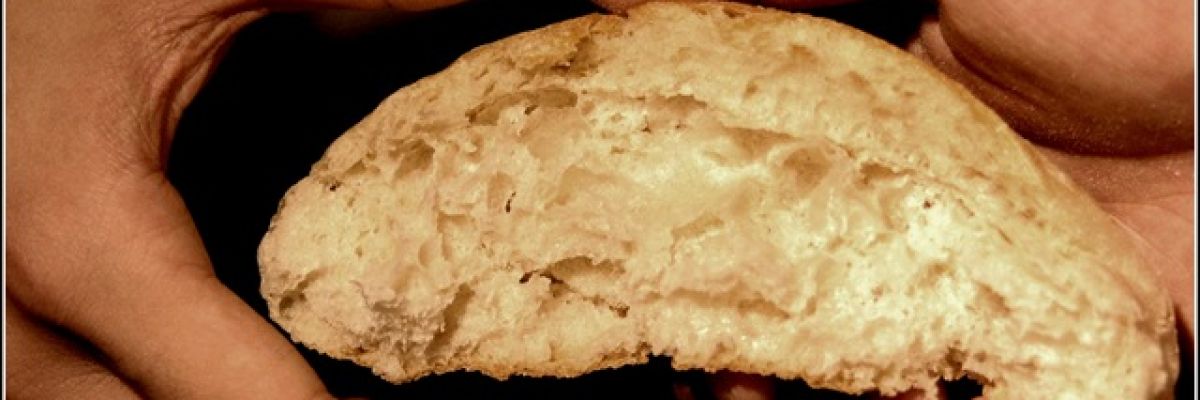
In the Gospels, the most famous miracle associated with Jesus—other than the Resurrection—is the Feeding of the Five Thousand. It’s recorded in all four Gospels.
But Matthew and Mark record an additional, similar miracle, known as the Feeding of the Four Thousand. The numbers connected with this miracle are a little different (four thousand people are fed, they use seven loaves and “a few small fish,” and they pick up seven baskets of leftovers), but it’s the same basic type of miracle.
That may be why Luke and John chose not to record it: Given the space limitations on ancient books, which needed to fit comfortably within a scroll, they may have concluded that they would only record one miracle of this type, and they picked the more impressive one.
But even if a miraculous multiplication of food has been done before, and on a somewhat larger scale, it’s still impressive! That may be why Matthew and Mark chose to record it.
There may also be another reason, but it requires a little detective work.
Jesus’ Travels
Matthew, Mark, and Luke record most of Jesus’ ministry as taking place in Galilee, which is an area north of Judea. In these three Gospels, Jesus is in Judea at the very beginning of his ministry, when he is baptized by John, and again at the end of his ministry, when he is crucified in Jerusalem. Between those points, however, he spends most of his time in Galilee.
But not all of it.
He also makes excursions into Gentile territory, such as when he exorcizes the Gerasene/Gadarene demoniac (Mark 5:1-20). That’s why there was a herd of two thousand pigs in that story—because the Gerasenes were Gentiles and ate pork.
It’s interesting that, at the end of the story, Jesus tells the formerly possessed man to spread the word about what God had done for him. This is the opposite of what Jesus frequently did in Galilee, where he often told people to keep what he did for them quiet.
The apparent reason for this was to try to keep from being mobbed or unwillingly declared king as people came to regard him as a political Messiah (John 6:15).
But since he spent most of his time in Galilee, there was less danger of that, and having the demoniac reveal what Jesus had done for him wouldn’t interfere with his ministry. Indeed, it would help Gentiles learn about the God of Israel!
If you read carefully, though, you see that—as Jesus continues to make excursions into Gentile territory—his reputation starts growing among them.
That brings us to the two feeding miracles.
Feeding the Five Thousand
Matthew and Mark say that this miracle occurred in “a lonely place” by the Sea of Galilee, but they don’t say where (Matt. 14:13, Mark 6:32). John is also vague about where it happened (John 6:1), but Luke tells us that it took place near Bethsaida (Luke 9:10).
Bethsaida was the original home of Peter and Andrew (John 1:44). It was a fishing village on the Sea of Galilee. In fact, the name Beth-Tsaida means “House of Fishing.”
It was, in any event, in Jewish territory, and so the Feeding of the Five Thousand involved a predominantly Jewish audience.
What about the other feeding miracle?
“Just Who Is Really Unclean, Here?”
In Mark 7, Jesus is criticized by some scribes and Pharisees because his disciples eat without washing their hands, according to Jewish custom. Jesus defends the disciples by saying that it is what comes out of a man’s heart, not what goes into his mouth, that makes him unclean (7:1-23).
Mark then adds an editorial comment to flesh out the implications of this: “Thus he declared all foods clean” (7:19). This was an important thing, since there was a question in the early Church about whether Gentiles had to keep the Jewish food laws (Rom. 14, Gal. 2:11-14, Col. 2:16).
This sets us up for a series of stories involving Gentiles.
First, Mark records Jesus going on an excursion to Tyre and Sidon, which are in modern-day Lebanon, to the north of Galilee. There he encounters the Syrophoenician woman—a Gentile—and exorcizes her daughter (7:24-30).
Mark then states: “Then he returned from the region of Tyre, and went through Sidon to the Sea of Galilee, through the region of the Decapolis” (7:31).
The Decapolis was a group of ten cities that lay primarily on the east side of the Jordan River, in what is now the country of Jordan.
At the time, they were Greco-Roman cities, so they were Gentile rather than Jewish. In fact, Gerasa and Gadara were two of the ten cities, and so Jesus is going back into the same territory where he exorcized the demoniac.
But his reputation as a miracle-worker has grown, perhaps as a result of that man’s spreading the word, and he is brought a deaf mute, who he also heals (7:32-37).
Then something really interesting happens.
Feeding the Four Thousand
Mark reports:
In those days, when again a great crowd had gathered, and they had nothing to eat, he called his disciples to him, and said to them, “I have compassion on the crowd, because they have been with me now three days, and have nothing to eat; and if I send them away hungry to their homes, they will faint on the way; and some of them have come a long way” [Mark 7:1-3].
So the Feeding of the Four Thousand, which occurs in this same sequence of stories involving Gentiles, after Jesus has journeyed into the Decapolis, appears to involve a Gentile audience.
In other words: It’s the Gentile sequel to the Feeding of the Five Thousand.
Jesus may have encountered trouble at home—such as the conflict with the Pharisees over hand washing—but his reputation in the Decapolis has grown to the point that he can now attract an audience of four thousand Gentiles and hold them for three days until they run out of food, leading to the second feeding miracle.
Matthew’s account is similar. In his version there is the conflict with the Pharisees about hand washing (Matt. 15:1-20), then Jesus goes to Tyre and Sidon and exorcizes the Syrophoenician woman’s daughter (Matthew specifically notes that the woman is “a Canaanite,” Matt 15:22). Afterward, as in Mark, Jesus journeys back and “passed along the Sea of Galilee” (Matt. 15:29), which is what you’d likely do to get to the Decapolis.
Matthew doesn’t make it explicit that Jesus was in the Decapolis when he performed the next set of miracles, which included healing “the lame, the maimed, the blind, the dumb, and many others” (Matt. 15:30), but he does say that, “the throng wondered, when they saw the dumb speaking, the maimed whole, the lame walking, and the blind seeing; and they glorified the God of Israel” (Matt. 15:31).
This would be a strange thing to say if the audience were Jewish. Jews already glorified the God of Israel. They did it all the time. They worshipped him daily.
What would be more remarkable—worthy of Matthew making a remark on it—is for Gentiles to glorify the God of Israel.
We’ve already seen from Mark’s account that the Feeding of the Four Thousand likely involved a predominantly Gentile audience, and the crowd that glorifies the God of Israel in Matthew turns out to be the same crowd of four thousand that he immediately proceeds to feed (Matt. 15:32-38).
It thus looks like both Matthew and Mark subtly portray the Feeding of the Four Thousand as the Gentile sequel to the Feeding of the Five Thousand, foreshadowing the including of Jews and Gentiles within his Church.



